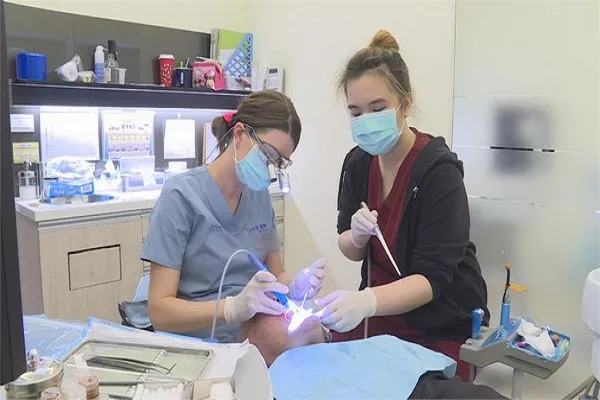In the realm of modern dentistry, partial dental implants have emerged as a revolutionary solution for individuals seeking to restore their smiles with confidence. As more people recognize the benefits of these implants, a common question arises: How much do partial dental implants cost? In this comprehensive guide, we will delve into the factors that influence the cost of partial dental implants, explore affordable options, and provide insights into making a well-informed decision for your oral health.
Understanding the Basics of Partial Dental Implants:
Partial dental implants, also known as implant-supported partial dentures, are prosthetic teeth that are anchored to dental implants surgically placed into the jawbone. These implants offer a stable and durable solution for those with missing teeth, enhancing both function and aesthetics. However, the cost of this transformative dental procedure varies based on several key factors.
Factors Influencing the Cost of Partial Dental Implants:
a. Number of Implants Required:
The number of dental implants needed plays a pivotal role in determining the overall cost. Typically, the more implants required to support the partial denture, the higher the cost. This is because each implant involves surgical placement and the use of high-quality materials.
b. Quality of Materials Used:
The materials used in partial dental implants significantly impact their cost. High-quality materials, such as titanium for the implant posts and durable porcelain for the prosthetic teeth, tend to be more expensive. However, investing in quality materials ensures longevity and effectiveness.
c. Complexity of the Procedure:
The complexity of the dental implant procedure can influence the overall cost. If additional treatments, such as bone grafting or sinus lifts, are necessary to prepare the jaw for implants, the complexity increases, leading to a higher cost.
d. Location of the Dental Practice:
Geographical location plays a role in the cost of dental procedures. Dental practices in urban areas or regions with a higher cost of living may charge more for their services. It is advisable to explore options in different locations to find a balance between quality and affordability.
Navigating Affordable Options for Partial Dental Implants:
a. Insurance Coverage:
While dental implants are often considered elective, some dental insurance plans may cover a portion of the cost, particularly if the implants are deemed medically necessary. It is crucial to check with your insurance provider to understand your coverage and potential reimbursement.
b. Dental Schools and Clinics:
Dental schools and clinics often provide dental services at a reduced cost. Under the supervision of experienced professionals, students perform the procedures, making it a cost-effective option for those seeking affordable partial dental implants.
c. Payment Plans and Financing:
Many dental practices offer flexible payment plans or financing options to ease the financial burden of dental implant procedures. Exploring these options allows individuals to undergo treatment without compromising their budget.
d. Research and Comparisons:
Conducting thorough research and obtaining quotes from multiple dental practices can help individuals identify competitive pricing. It’s essential to consider not only the cost but also the reputation and expertise of the dental professionals.
The Long-Term Benefits of Partial Dental Implants:
Investing in partial dental implants extends beyond the immediate cost considerations. These implants offer a long-lasting and aesthetically pleasing solution, promoting oral health and overall well-being. The durability and functionality of implant-supported partial dentures make them a worthwhile investment in one’s smile and confidence.
Post-Procedure Care and Maintenance:
a. Regular Dental Check-ups:
After the placement of partial dental implants, regular dental check-ups are crucial to monitor the implants’ health and address any potential issues promptly. Routine professional cleanings and examinations contribute to the long-term success of the implants.
b. Good Oral Hygiene Practices:
Maintaining excellent oral hygiene is essential for the longevity of partial dental implants. Proper brushing, flossing, and the use of antimicrobial mouthwash help prevent complications and ensure the implants remain in optimal condition.
Conclusion: Making an Informed Decision for Your Smile:
In conclusion, the cost of partial dental implants is influenced by various factors, and exploring affordable options is essential for those considering this transformative dental procedure.
Related Links:
How many visits for a dental implant?
What are the parts of a dental implant?
What to Do if dental implant crown falls out?





























